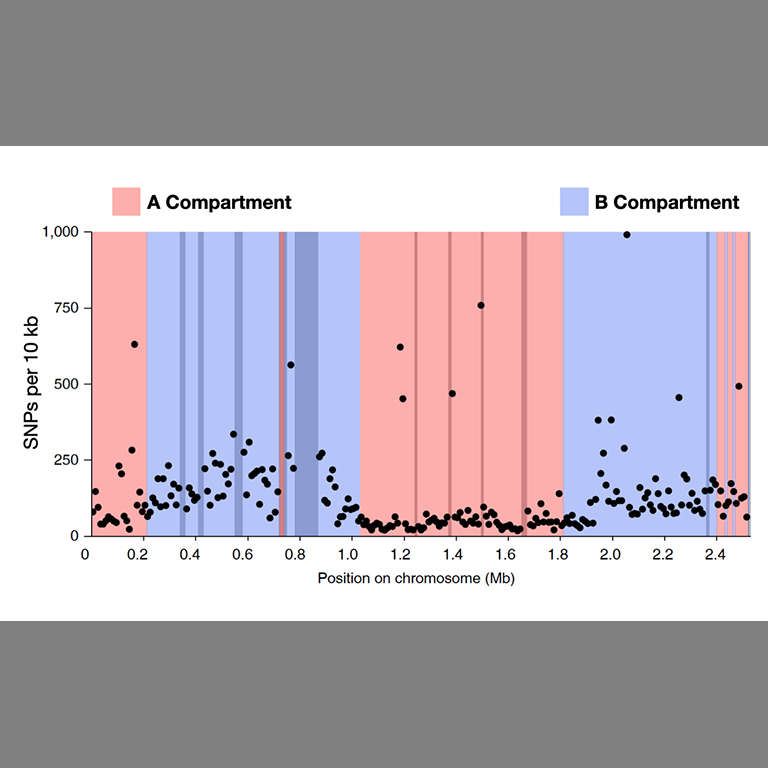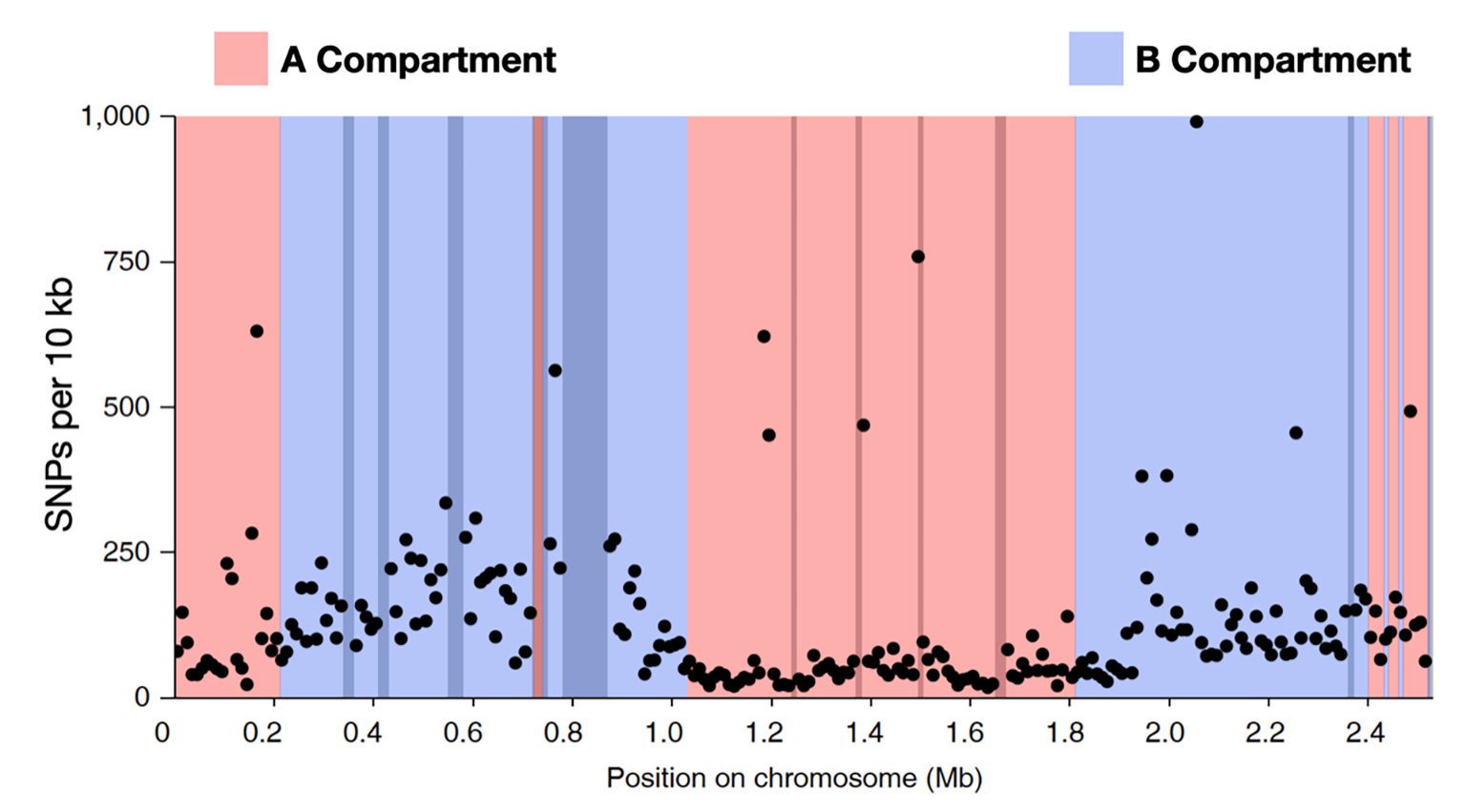New work from Steve Bell and Rachel Samson’s labs, published in Nature Microbiology, uncovers an interplay between the structure of chromosomes and their evolutionary rates.
Distinguished Professor Bell is a faculty member in the College of Arts and Sciences’ Department of Biology and Department of Molecular and Cellular Biochemistry at Indiana University Bloomington. He also serves as the MCB departmental chair. Samson is an assistant research scientist in the Department of Molecular and Cellular Biochemistry.
Building on their previous work that revealed that hyperthermophilic species of archaea in the genus Sulfolobus organize their chromosomes into discrete “A” and “B” compartments, Bell lab postdoc Catherine Badel measured mutation rates across the chromosomes of eleven Sulfolobus species. The analyses demonstrated that the A compartment accumulates changes more slowly than the B compartment. Probing the basis of this observation, the team provided evidence that a combination of DNA replication termination events within the B compartment and reduced accessibility of DNA within that compartment likely contributed to enhanced mutation accumulation. Thus, while in the modernist architecture of early 20th-century buildings, the maxim was “form follows function,” it seems that for archaeal chromosomes, evolution follows form.


 The College of Arts
The College of Arts